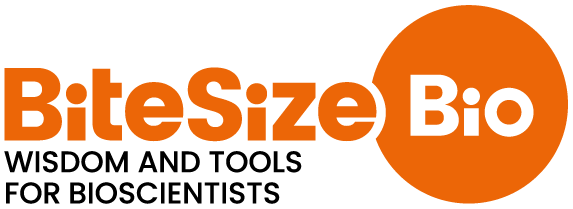
Amanda Welch
Science Editor and Writer, AtKisson Training Group
Appears in 56 Episodes
Grant Writing: Everything but the Science
Dive into the often daunting world of grant applications. Securing funding is critical for any researcher, but the process can be filled with tricky tasks and complex ...

How to Effectively Communicate Your Research
Join Kate Christian as she demystifies the process of effectively communicating your research in the latest episode of Listen In. She describes the impact of research ...

How to Write a Research Paper IV: Understanding the Publication Process
You have written a research paper. What now? Your research can only have an impact if someone reads it. So, you must submit your article to a journal for publication. ...

How to Write a Research Paper III: Common Problems and How to Overcome Them
The best way to solve a problem is to avoid it in the first place. While journals can and do reject articles for scientific reasons, they also reject articles for stru...

How to Write a Research Paper II: The Anatomy
All research papers have certain elements in common: Introduction, Methods, Results, and Conclusion. How can you structure your introduction to best frame the research...

How to Write a Research Paper I: Telling Your Story
Rarely do we consider writing a scientific paper as a creative exercise. But what if that could change? The best way to communicate anything is through stories. The sc...

Ethical Research Practice II: Reporting Negative Results and Outliers
As a scientific researcher, you must present your work in an unbiased, original, and representative way. Without due care and attention, it is easy to drift over the b...

Ethical Research Practice I: Plagiarism – What It Is and How to Avoid It
As a scientific researcher, you must present your work in an unbiased, original, and representative way. Without due care and attention, it is easy to drift over the b...

How to Prepare a Winning Grant Proposal – Part 3: Resubmission
In the third part of our grant writing tutorial series, you’ll learn how to process a grant review and take the next steps.Dr. Seigel shares how to read and interpret ...

How to Prepare a Winning Grant Proposal – Part 2: Nuts and Bolts
In the second part of our grant writing tutorial series, you’ll learn how to get the attention and respect of the reviewers by presenting your ideas in the best possib...

How to Prepare a Winning Grant Proposal – Part 1: Getting Started
Writing grant proposals can be daunting, especially when the stakes are high. Getting started is the first and potentially hardest step to writing a proposal that gets...

How To Critically Analyze A Research Paper
Don't sabotage your work by missing critical details.Let's face it; research papers are a pain to read. Their dry language and sheer density make crucial details hard ...

Basics of FLIM and Applications to FRET Biosensors
Functional imaging is a rapidly growing field key to driving new understanding in biology. Insights into the function and interaction of molecules are the key to revea...

Adding Multiplex Factor to Confocal Imaging with ZEISS LSM
In this tutorial on confocal imaging, you will learn how you can:– Capture weaker signals—and still get sound, reproducible data.– Reach faster volumetric imaging with...

Cryo-electron Tomography for Cell Biology
In this webinar, you will learn:– The complete workflow for in situ cryo-electron tomography– How subtomogram averaging within the cell yields native-state structures ...

Cryo-Electron Microscopy and the Complexity of Cancer
In this webinar, you will learn:– How structural biology can change the face of your research– The biological challenges of cancer research– Advantages of cryo-EM for ...

Fast superresolution microscopy – with Lattice SIM
Your life sciences research often requires you to measure, quantify and understand the finest details and sub-cellular structures of your sample. You may be working wi...

Array Tomography for SEM 3D Reconstruction
Array tomography (AT) is a 3D image reconstruction technique for high resolution, quantitative analysis of biological structures. For optimal results, ultrathin and or...

Expanding the limits of EM sample prep with ICE
In this webinar you will learn:– Improved vitrification: Specimen vitrification without synchronisation fluid– Vitrification strategies: Optimized freezing for differe...

Using CRISPR/Cas9 to detect DNA sequences with AFM
Join Dr. Jason Reed as he describes a novel method by which endonuclease-inhibited Cas9 can be employed as a programmable biomarker in high-speed atomic force microsco...

Nucleic acids 101: Confirming Their Quality
Join us in this webinar as Dr. Victoria Doronina helps you determine the quality of your nucleic acids. In this webinar you will learn:– How to choose the best method ...

Live Cell Isolation by Laser Microdissection
In this webinar, you will learn:– How to best prepare your specimen for live cell isolation by laser microdissection– How to optimize your laser microdissection workfl...

Reliable quantification of fluorescence images
In this webinar, you will learn:– How to overcome issues with stage drift and crosstalk between channels– How to obtain reliable images and reproducible quantification...

Crash Course: Developing a Fool-Proof ELISA
Join us in this webinar featuring Dr. Omonse Talton who will guide you through developing a “fool proof” enzyme-linked immunosorbent assay (ELISA). In this webinar, yo...

Discovering PARP inhibitor resistance with CRISPR
In this webinar, Dr. Stephen Pettitt explains how he applies genome-wide targeted mutagenesis screens to elucidate the genetic basis of drug resistance. Using mouse an...

A Guide to Target Gene Validation With Quantitative RT-PCR
While next generation sequencing enables researchers to unveil expression levels of the entire genome, qRT-PCR remains the gold standard for measuring transcript level...

How to Ensure Your Cell-Based Assays Are Reproducible
Join us in this webinar featuring Dr. Vicki Doronina as she takes you through vital components of assay design.In this webinar, you will learn:How to choose between im...

Simultaneous Proteomics and Transcriptomics
Join us for this webinar, featuring Dr. Marlon Stoeckius, as he explains how you can improve your single-cell RNA-sequencing (scRNA-seq) experiments.In this tutorial, ...

Using qPCR to Validate Epigenetic Enrichment of Pathogen DNA
qPCR is one of the most specific and sensitive tools in molecular biology, allowing the quantification of target DNA molecules present at less than 1 in 106. Next Gene...

Super-Resolved STED Spectroscopy: New insights
Molecular interactions are key in cellular signalling. They are often ruled or rendered by the mobility of the involved molecules. We present different tools that are ...


